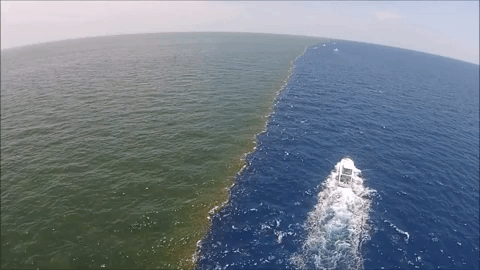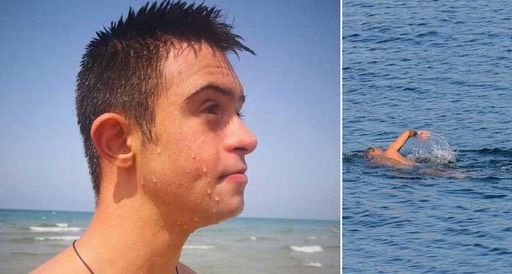When was the last time you came across two shades of water? You heard right! I say two shades because, in this video, the merging of two great bodies of water is clearly distinguished.
A famous quote from John Keats says, “the poetry of earth is never dead,” and everything lies in its exquisite beauty.
Do you wonder why, in this particular case, water can't mix with water itself? Well, Gulf of Alaska, along with experts show us why!
With an unevenly distributed combination of mountain, forest and tidewater glaciers, Gulf of Alaska is a place where two oceans seem to meet, but interestingly enough, they don't mix with each other (or so is believed).
Color variations of the…
dark and light blue water in that intersecting point is not only clearly visible but quite stunning. Even the increasing froth shows the exact point where the Bering Sea and the Pacific Ocean unite.
What is the cause for this incredible phenomenon?
Here’s the scientific explanation:
They’re actually not two oceans – but a combination of water from a melting glacier and the offshore water of Gulf of Alaska. The waters melting away from the glaciers are rich in minerals and sediment-laden; the other is essentially saline water. Given that the first one is much lighter in density, it has a light blue color, while the salt content makes sea water density heavier, thus has a much darker appearance.
While these variations in water density create differences in colors; the temperature and salinity levels are also responsible for keeping the water bodies dissimilar.

It’s a myth – ‘meet but do not mix’!
Surprised! Or confused? You heard that right. This ‘meet but do not mix’ concept is partially a myth. If ever you get to notice these borders of their intersection, you will see them varying at times. The fact is, those waters do mix eventually, but their intersecting borders are not static.
A sneak peak of this photo's history:
Guess how this occurrence on Earth caught the eyes of this world? The original photo was clicked back in 2007 when a team of oceanographers set out for a research work to understand iron’s role in the Gulf of Alaska. Their study also included how that iron in the water bodies reaches northern Pacific regions.
However, it only went viral when photographer Kent Smith set out on an expedition back in 2010 and took a photograph. By 2013, this famous photograph received 860,000+ views from users across the globe on internet.
All those misconceptions are…

doing the rounds regarding ‘meeting and mixing’ were cleared by him later on. Presently, studies are on regarding how the presence of this iron influences
Presently, studies are on regarding how the presence of this iron influences growth of plankton and marine productivity.
As for you; keep aside all these explanations for now. Experience the spectacular splendor of nature at the Gulf of Alaska!
Below we brought you a clip of this incredible even being filmed with a drone. Watch the video, leave your comments below and share this article with your friends who love nature!







